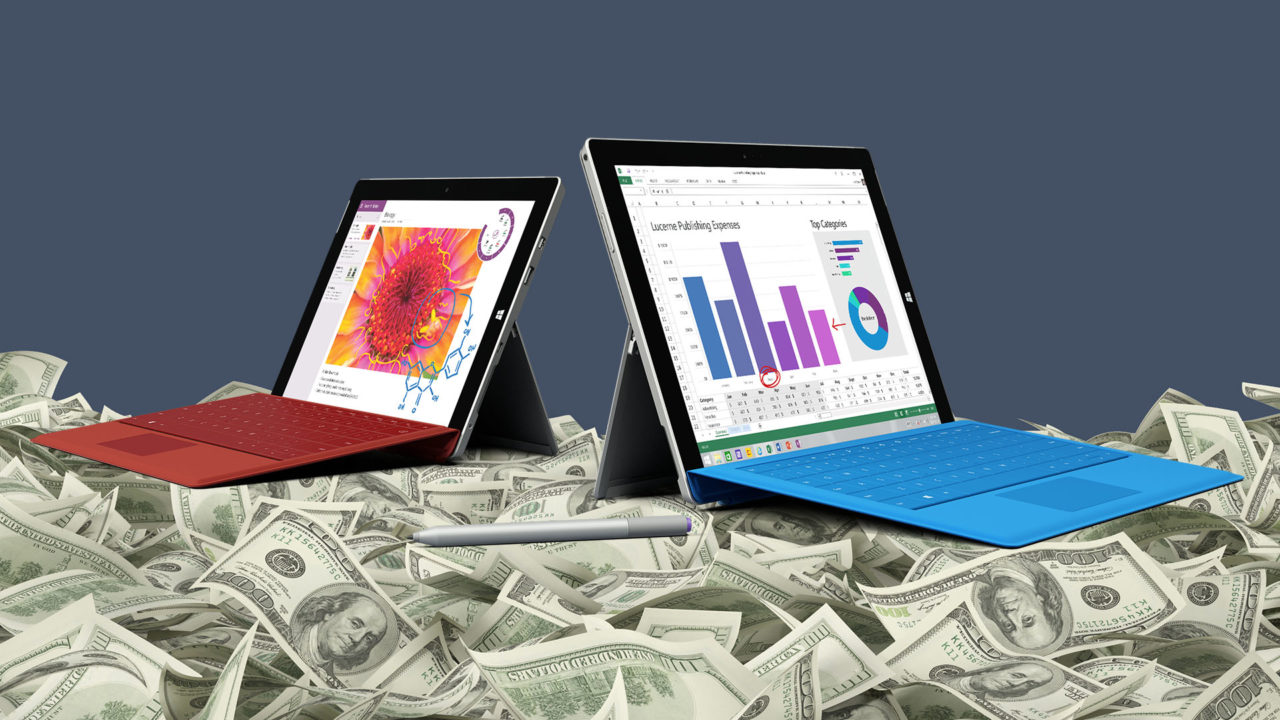The True Cost of the Microsoft Surface 3

Microsoft this week announced the Surface 3, the latest version of the company’s hybrid tablet line of mobile devices. As a fan and owner of previous generation Surface devices (first generation Surface Pro and Surface 2), I was intrigued by the new model’s features. Specifically, Microsoft addresses the following concerns and desires that I and many others had with previous non-Pro Surface models:
- The switch from ARM to x86-based CPUs, which allows for the support of “full” Windows, including desktop apps.
- The switch from a 16:9 aspect ratio display to a more productivity-friendly 3:2 aspect ratio display.
- More storage (64GB vs. 32GB) at the entry-level price point.
- Thinner and lighter than Surface 2.
- Full support for the Surface Pen.
Perhaps best of all, however, is that Surface 3 starts at $499, which is a bit higher than Surface 2’s entry-level price of $449, but significantly cheaper than the Surface Pro 3’s $799 starting point. This has unsurprisingly led many to make immediate comparisons of Surface 3 to Apple’s iPad Air 2. Even Microsoft, which frequently compares the Surface Pro line to the MacBook Air, prominently positions Surface 3 against Apple’s flagship tablet on the Surface 3 product page.
Such a comparison initially seems appropriate. At $499, the Surface 3 compares quite well to the iPad, with more storage, the ability to run desktop software and use as a laptop with a mouse, a year of Office 365, and full digitizer pen support, among other advantages.
 The problem, however, is that the Surface 3 (or any Surface model, for that matter) is difficult to recommend at the base price point. The Surface is best experienced as it was initially intended: as a perfect blend of tablet and laptop functionality. At $499, you only get the former. To get the latter, you need a Type Cover, which isn’t included out of the box and costs an additional $130. Going further, OneNote is one of my favorite and most-used apps, and the Surface is a perfect OneNote device. But to make the most of OneNote, you’ll likely also want to pick up the Surface Pen, also not included and priced at $50.
The problem, however, is that the Surface 3 (or any Surface model, for that matter) is difficult to recommend at the base price point. The Surface is best experienced as it was initially intended: as a perfect blend of tablet and laptop functionality. At $499, you only get the former. To get the latter, you need a Type Cover, which isn’t included out of the box and costs an additional $130. Going further, OneNote is one of my favorite and most-used apps, and the Surface is a perfect OneNote device. But to make the most of OneNote, you’ll likely also want to pick up the Surface Pen, also not included and priced at $50.
The Surface 3 is difficult to recommend at the base price point
Add it all up and you’re now looking at $679, for the entry level model. Also keep in mind that, even though we’ll need to wait until Surface 3 ships in May to find out for sure, some are concerned about the base model’s 2GB of RAM. You can get 4GB of RAM (plus a bump to 128GB of storage) for an extra $100. Add that to the Type Cover/Pen surcharge and your wallet will be $779 lighter when you walk out of the Microsoft Store.
All that said, I still think the Surface line, and the Surface 3 in particular, is a very promising and capable device, and I’ll be eager to pick one up come May. The ability to upgrade to Windows 10 for free later this year and the included Office 365 subscription are icing on the cake for those who need a productivity-focused mobile device. But it’s important to keep in mind that the price on the sticker won’t equal your total cost when it’s all said and done.
It’s true, of course, that there are many additional costs associated with the iPad (cases, screen protectors, capacitive styluses, AppleCare, and so on), but most iPad buyers can at least get off to a good start with the iPad hardware alone. You won’t have all the benefits of a full desktop operating system when you need it, but you’ll know from the start how much you’re in for. With Surface 3, that view at the outset isn’t so clear.

















3 thoughts on “The True Cost of the Microsoft Surface 3”
So initially, Windows OS and Windows apps take up much more storage than iOS and iOS apps, and they run MUCH more slowly than equivalent apps on iOS (and use much more RAM to do it).
The iPad Air 2 can run high-end 3D games at high frame rates, with full rendering (especially using Metal), but you won’t see anything approaching this performance on the Surface 3.